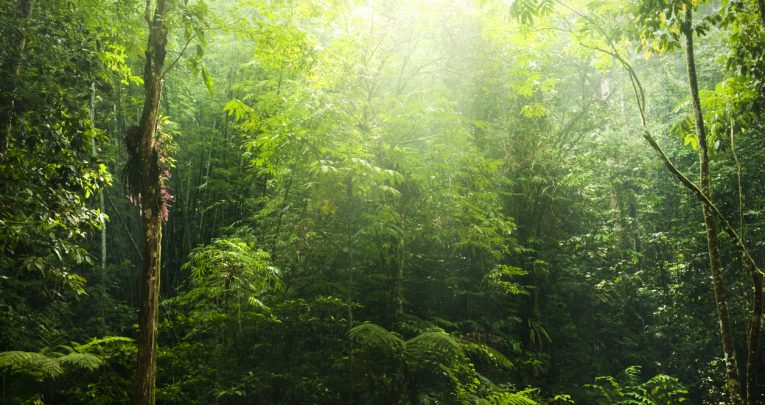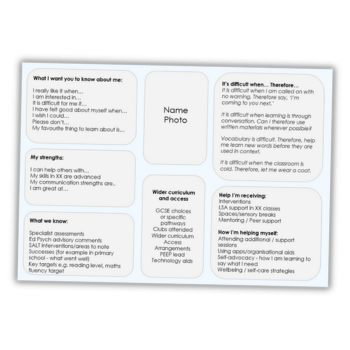How to Plan a Great Secondary Curriculum – #JustLetMeTeach

In the learning rainforest an endlessly creative canopy is supported by solid subject knowledge and the highest standards of study and behaviour, explains Tom Sherrington…

To support our new #JustLetMeTeach campaign, we have free primary and secondary teacher packs to download with practical advice to help you reduce your workload, refresh your teaching, and reignite a love of learning for you and your students.
When I set out to write my recent book, The Learning Rainforest, I wanted to communicate my love of teaching and to capture its blend of contradictions and tensions; those aspects of the job that I have found deeply rewarding over a 30-year career.
On a personal and intellectual level, teaching is deeply rewarding but, in part, this is because it is also immensely challenging.
Great teaching is about communicating joy, awe and wonder in exploring and mastering the curriculum material. It is also about rigour and discipline; setting high standards and driving students towards them, relentlessly.
It is about the art of communicating effectively with a complex group of unique individuals, and the science of learning, which is increasingly informed by a body of sound research evidence.
The Learning Rainforest is also about developing a secure understanding of the parameters within which teachers have the autonomy to make well-informed decisions.
Planning a great curriculum can’t be a free-for-all; within our subject disciplines there are certain requirements that we need to meet and, if we take the learning from research on board, there some practices that are going to much more effective than others in particular circumstances.
But, that all still leaves teachers with a huge degree of freedom – to shape the learning experience of their students in myriad ways.
The #JustLetMeTeach mantra is a fabulous call to arms – but, actually, it has always been there for the taking.
Secure growth
The rainforest metaphor is an attempt to capture the sense that excellence in learning finds many forms. Each specimen in the forest is a unique individual; the canopy represents the awe-inspiring diversity of ways young people can express their talents and achievements – the possibilities are endless.
However, you can’t build a lush canopy unless the conditions for growth are secure, nor without the strong trunks and branch structures that give the canopy strength.
These represent the conditions for successful learning in our classrooms – excellent behaviour, relationships and high expectations – and the knowledge structure we need to build in order for our students to succeed.
As I explore in some detail, some of the polarised debates that teachers get into on social media can be resolved by thinking less in terms of good ideas and bad ideas and more in terms of sequencing modes of learning appropriately.
Group work, for example, is not inherently a good thing or a bad thing; it can be amazing for extending learning or it can be horribly lame and unproductive.
I argue that group work is likely to be much more successful as a way of exploring possibilities once students have already developed a secure enough knowledge structure for the activity to have real value.
If students don’t yet know much about a topic, getting them in a group to recycle their ignorance isn’t a great idea.
Ideal conditions
A central element in creating optimal conditions for learning is to establish excellent behaviour.
Whilst great school systems are essential, I’m a firm believer that teachers can and should develop the skills needed to hold attention, to insist on silence, to establish and assertive presence, using the systems to support them. It’s largely in our hands.
We also need to teach with a very strong ‘teach to the top’ mentality. It’s as much an attitude as a strategy; I’m forever urging teachers to find the confidence to ‘pitch it up’.
This finds form in the depth of responses demanded from students, a stance that won’t accept mediocrity or sloppy work, and in selecting texts and resources that are genuinely challenging.
Nobody needs to start their science education in a secondary school colouring in a cover page of safety rules and equipment – not when they could be discussing the history of the concept of atoms or ideas about the scale of the universe.
Why read Holes when you’ve got To Kill A Mockingbird?
Sound knowledge
Research on effective instructional methods and findings from cognitive science give a firm steer on the central importance of teacher-led instruction and formative assessment in building knowledge. This is what I call ‘Mode A’ teaching.
Once we have decided on the knowledge we want students to learn – a process then can participate in – there’s a need for clear teacher instruction, good modelling of the thinking, and plenty of practice for students.
Great questioning is at the heart of the instructional process and there are several core techniques that teachers can master, ensuring that they explore into the corners of students’ understanding, involving all members of the class.
Effective extensive probing questioning is the hallmark of a great teacher in my experience.
There is then a need to be very conscious of the fact that what we see in the here and now of a lesson is only short-term performance; learning is the knowledge and skills that students retain some time in the future.
This means we need to engage in various forms of retrieval practice and low stakes testing over time to make sure our students have really learned the things we want them to know.
Further exploration
Finally, the Learning Rainforest model leads to the huge range of possibilities for exploring the curriculum using ‘Mode B’ teaching.
Most ideas I suggest are more successful with more knowledgeable students – so it’s important to get the sequence right.
Students can engage in a range of collaborative learning processes, extended projects, forms of independent research and study, various structured speech activities including debates and recitations, and opportunities to teach parts of lessons to their peers.
Some of my favourite teaching experiences have involved co-construction, where students help to design and deliver units of work.
Given the right conditions and knowledge base, students at any stage can be guided towards producing work that is truly dazzling, regardless of their starting point.
This is where rigour and joy join forces. That is the essence of the Learning Rainforest and, hopefully, the spirit of #JustLetMeTeach: teaching that is effective, evidence-informed, focused on securing deep knowledge – and always inspiring and joyful.








